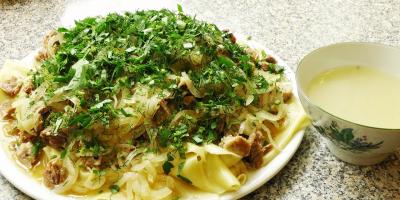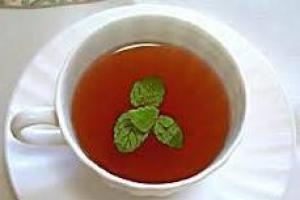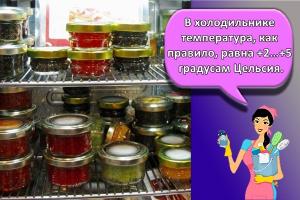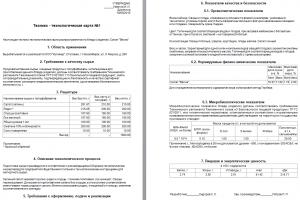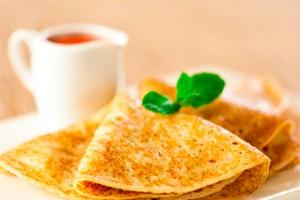Dietary nutrition for inflammation of the pancreas involves the mandatory use of vegetables. Broccoli is one of the most useful plant foods for pancreatitis.
1 The composition and useful qualities of vegetables
Broccoli is one of the vegetables that are the best suited for diet menu. This is due to the rich chemical composition product, low calorie content and almost complete absence of fat. The vegetable contains a large amount of vitamins (C, A, B1, B2, B6, B9, E, K) and minerals (potassium, calcium, magnesium, manganese and others), dietary fiber, easily digestible protein.
The use of broccoli in pancreatitis brings great benefits to the body.
Due to the high content of complex carbohydrates, such food promotes rapid satiety without overloading and without increasing irritation of the inflamed pancreas. Vegetable protein, which is present in large quantities in a vegetable, is a building material that accelerates the regeneration of organ tissues.
Fiber helps to normalize the functioning of the gastrointestinal tract and cleanse the intestines of harmful substances, and the presence of rare vitamin U reduces damage to gland cells and reduces the risk of developing malignant neoplasms.
Broccoli also has the ability to lower blood sugar levels, thereby preventing the development of pancreatogenic diabetes mellitus.
2 Features of eating broccoli
Features of the use of broccoli in pancreatitis (inflammation of the pancreas) largely depend on the form of the disease.
For acute form
When the patient is shown therapeutic fasting, which should last 3-5 days, after which you can switch to sparing nutrition. You can gradually add products to the menu that do not burden the pancreas, incl. broccoli.
The product must not be eaten raw, because. a fresh vegetable contains a large amount of fiber, which can aggravate the course of pancreatitis and increase the symptoms of the disease.
Broccoli must be boiled, steamed or stewed. In addition, it is recommended to use crushed inflorescences in order to minimize the load on the digestive organ. Do not add oil or salt to the finished vegetable.

It is necessary to start using this product in case of acute inflammation of the pancreas with caution, taking small portions (50-100 g per day). If broccoli causes bloating, increased pain, nausea, or diarrhea, the vegetable should be completely eliminated from the diet.
In the chronic stage
When out of the stage of exacerbation, you can use whole broccoli inflorescences. They can be stewed, boiled, baked in the oven or steamed, combined with other vegetables harmless to the pancreas, used in the preparation of first and second courses.
It is permissible to add a small amount of salt and vegetable oil.
The permitted daily volume of broccoli in chronic pancreatitis in remission is 200 g.
With an exacerbation of the disease
With an exacerbation of the disease, it is necessary to stop eating the vegetable for about a week, until the pronounced symptoms of the inflammatory process are eliminated. In the future, broccoli can be reintroduced into the diet, following the same rules as in the primary acute attack of pancreatitis.
Cholecystopancreatitis
If pancreatitis is accompanied, you can eat green inflorescences by first subjecting them to a thorough heat treatment. It is allowed to enter this product in the menu after the elimination of the acute inflammatory process.

3 How to cook
To prepare broccoli for dietary nutrition, you need to boil, stew or place the inflorescences in a double boiler for 3-7 minutes. Also, the vegetable can be used in other dishes: mashed potatoes or casseroles.
Soup puree
A delicious and healthy soup puree can be prepared by adhering to the following recipe:
- Wash and peel 1 small carrot, 1 medium potato.
- Rinse 100 g of broccoli (fresh or frozen) in running water, divide into inflorescences.
- Pour carrots and potatoes with hot water so that the liquid completely covers the ingredients, boil for 10 minutes, then add broccoli and leave on low heat for another 10-15 minutes.
- Add a pinch of salt to the vegetable broth, grind the mass with a blender.
This puree soup is well suited for nutrition with acute pancreatitis, if you remove salt from the dish. During the period of remission, you can add a small amount of low-fat cream to the finished mass.
With pancreatitis, gastroenterologists recommend using broccoli cabbage because of the wealth of healing properties that favorably affect the state of the pancreas. In addition, broccoli contains a number of vitamins - A, C, E, as well as H, K, PP and minerals - Ca, Cr, K, I and Mg. The composition of this overseas vegetable includes B vitamins, which enhance the effect of trace elements on the human body.
The soft fiber contained in broccoli makes this type of cabbage one of the most useful. This vegetable does not overload the pancreas and has a calming effect on it. In therapeutic dietary nutrition, broccoli is indispensable because of its surprisingly low calorie content, because 100 g of the product contains only 27 kcal. This variety of cabbage has excellent taste. It can be prepared in a variety of ways:
- boil;
- cook for a couple;
- prepare a soufflé or puree soup;
- add boiled broccoli to salads, casseroles or serve as a side dish.
Despite all the advantages of this irreplaceable vegetable, patients with pancreatitis should adhere to the main features of the culinary processing of this healthy and very tasty cabbage.
Broccoli for acute pancreatitis
During the period of exacerbation of the disease, it is necessary to exclude this product from the diet. It is also not recommended to use broccoli with increased acidity of the stomach. It is better to include this cabbage in the diet for the prevention of pancreatitis, using both young sprouts and a mature vegetable.
Broccoli in remission of pancreatitis
In the diet of patients during remission, broccoli will be an excellent variety for a side dish and the main source of vitamins and minerals. This cabbage is indispensable for quick recuperation, especially for a weakened body. With regular use, broccoli reduces the risk of atherosclerosis, is the best tool in the prevention of cancer. In addition, sulforaphane, which is part of broccoli, has an anti-inflammatory and calming effect in pancreatic disease.
Patients who are in remission of pancreatitis can add boiled and steamed broccoli to the diet, bake in the oven, add to soup, stew separately or cook vegetable stew. The only limitation is fresh, pickled and batter-fried cabbage.
In order for broccoli to retain all its beneficial properties as much as possible after cooking, it should be cooked for no more than two minutes after boiling water. And in order for the cabbage to have such a rich green color, after cooking, it is necessary to place the inflorescences in cold water.
Follow the basic rules for preparing this extraordinary healthy vegetable and delight yourself with the exquisite and delicate taste of broccoli!
With inflammation of the pancreas, the patient is prescribed a dietary table. Meals included in the diet, low-fat, low in calories, contain a reduced percentage of salt, and at the same time provide benefits. One of the products is broccoli. This vegetable contains many vitamins and minerals, it is non-caloric, low in fat and high in fiber, which is important when the pancreas becomes inflamed. Eating broccoli with pancreatitis is allowed when the disease has a chronic stage, as well as on the 4th day after the onset of an exacerbation of the pathology.
The question of whether broccoli is possible with pancreatitis worries many patients who have encountered this pathology, since the vegetable is a source of healing properties. Cabbage contains a sufficient amount of minerals with vitamins. In addition, broccoli is endowed with vitamin B, which enhances the effects of all components of this vegetable.
- Magnesium.
- Calcium.
- Selenium.
- Zinc.
- Sodium.
- Manganese.
- Vitamins - C, E, A, K, PP, B.
The product has a direct relationship with pancreatitis. Therefore, who is interested in patients with pancreatitis, whether there will be benefits from taking broccoli, the answer is unequivocal - yes. With pancreatitis, it is imperative to introduce this vegetable into the diet.
The vegetable contains soft fiber, which indicates the usefulness of the vegetable in the presence of pancreatitis. In addition, broccoli has a low calorie level, which allows you not to overload. The calorie content of the product is 27 kcal per 100 grams of cabbage. Thanks to the intake of broccoli, you can follow the dietary nutrition that the patient needs as much as possible.
You can use broccoli for pancreatitis, only boiled or stewed.
Of the beneficial properties, broccoli note:
- bowel cleansing due to the large amount of fiber;
- improvement of digestive processes;
- help in the secretion of bile;
- strengthening the retina;
- elimination of toxins;
- normalization of the acidity of the gastric secretion;
- supply of natural calcium to the body;
- increased immunity;
- the vegetable does not allow cholesterol to accumulate in the body;
- due to chlorophyll, the cells of the pancreas are strengthened, they become much more resistant to the influence of aggressive enzymes.
The benefits of vegetables are endless. Broccoli is considered one of the healthiest foods in the world. Each 100 grams of the product saturates the body with the daily requirement of vitamins K, C.
In addition, the usefulness of the product is noted in the fight against oncological pathologies. The substance sulforaphane, which is found in young cabbage stalks, does not allow cancer cells to develop. Cabbage also helps to normalize glucose in the circulatory system.
Due to individual intolerance, cabbage can adversely affect the body. If bloating, belching and diarrhea appear after eating broccoli, you should not introduce this product into your diet.
Before including broccoli on the menu, you should initially consult with your doctor about the current disease. And, unfortunately, if the patient has an acute stage of pancreatitis, then it is recommended to consume broccoli after introducing potatoes and pumpkin into the diet. For a dietary table, cabbage is eaten, making soup puree from it, or rubbing the vegetable without adding salt.
The product is boiled until soft and pureed using a blender, a fork. Every day you do not need to include a vegetable in your diet. If, after taking a patient with pancreatitis, the formation of gases has increased, the stomach is swollen and colic is fixed, then cabbage intake should be postponed.
Cauliflower for pancreatitis is included in the diet, since cabbage has a low calorie content, low fiber content, is easily digestible, it is allowed to eat on the 3rd week from the initial outbreaks of an acute event. Cooking cauliflower for pancreatitis.
- - puree.
- Boiled, stewed stew.
- For a couple.
They begin to introduce cabbage into the diet from small doses, bringing up to 100 grams per day. In order not to increase the secretion of gastric juice, and not develop a new attack, cauliflower is not consumed daily.
In the stage of remission and in chronic pancreatitis, it is allowed to boil, stew, cook in a double boiler, bake the product, adding a little salt to the dish. To prevent irritation of the mucous membrane, with pancreatitis, it is advised to combine broccoli with other acceptable products.
Cauliflower in remission is used with an increase in the daily dose of up to 200 grams.
In case of exacerbation of pancreatitis, it is necessary to boil broccoli in unsalted boiling water. You need to include broccoli in the menu in small doses, controlling the reaction of the body. If flatulence, colic develops, the intake of the vegetable is postponed.
How to cook broccoli for pancreatitis
In order for the dietary treatment of the pancreas to be beneficial, you need to properly prepare the vegetable. It is important to consult a doctor before using the product whether it is possible to eat broccoli with pancreatitis. After permission, follow the doctor's recommendations, choose those methods of cooking cabbage that are approved for a specific stage of the pathology.
Broccoli Casserole
It is necessary to boil 400 grams of vegetable in salted water. Approximate cooking time 7 minutes until boiling. Then the cabbage is dried. Next, grate the cheese. durum varieties 130 grams, 3 proteins are whipped with 60 ml of milk.
In a baking dish, disintegrate the cabbage, which is initially greased with butter, and then sprinkle with cheese and pour over the prepared sauce.
It is necessary to cook the casserole for 10-15 minutes in a preheated oven to 200 degrees.
Broccoli soup
To make a cabbage-based dish, you will need to take 5 small inflorescences, 500 ml of boiled water and medium potatoes. If the patient has a chronic course of pancreatitis or the disease is in remission, then up to 40 grams of low-fat is added to the recipe. hard cheese, a little salt and a tablespoon of cream.
Initially, boil water, then put the peeled cabbage and cook for 15 minutes, making a slow fire. When ready, puree with a blender.
Puree
For the dish you will need several cabbage inflorescences. They are boiled for 15 minutes over low heat. Then it is well kneaded to puree. If the patient has a chronic form of pancreatitis, then it is allowed to include skim milk up to 30 ml, and season the dish with salt. Before taking the puree is cooled to 40 degrees.
In addition to drug treatment, it is necessary to adhere to proper nutrition. If the recommendations are not followed, surgical intervention is not excluded to solve the problem.
The pancreas is a small organ that plays a large role in digestion. Malfunctions in the body lead to a disease called pancreatitis. People suffering from pancreatitis clearly fulfill the main condition of therapy - diet. When limiting food intake, it is important not to overdo it and not eliminate the food necessary for proper digestion. The list of vegetables allowed for use in pancreatitis is rather big. Does it include cabbage: white cabbage, broccoli? What is the benefit (harm) in the disease of the organ of the digestive system? To get answers to questions, we will understand the individual properties of the vegetable.
Is the cabbage good to eat?
There are many varieties of cabbage. Vegetables differ from each other in appearance, chemical composition. Each of them has a different amount of vitamins, trace elements and other useful properties. It is the content of chemical elements that prevents the addition of one type to the diet, and allows the intake of another. A person suffering from pancreatitis should choose dishes with caution, be sure to consult with your doctor. Unwise use of the product will bring harm, aggravating the condition of the unhealthy organ.
When compiling a menu for a patient who cares about his health, it is better to include Beijing, sea, broccoli, and color in the diet. Sometimes, stewed cabbage is added to the food:
- Beijing. The content of vitamins C, A, E and PP has a positive effect on the diseased organism. With long storage, the positive properties, vitamins, microelements do not disappear, but it is better to use fresh vegetables for food. The use of a raw vegetable is allowed for patients with impaired function of the production of pancreatic enzymes. Despite the positive impact, with exacerbations of the disease, it is worth refraining from eating lettuce.
- Brussels. The useful properties of the subspecies are much higher than those of a simple white sister. According to the content of fiber, protein, carbohydrates, phylloquinone, vitamins of group B, a miniature head of cabbage surpasses the usual representative of the cabbage family. It has a positive effect on the mucous membrane of the body, soothes irritation.
- Colored. The content of nutrients, vitamins prevails in comparison with other species. By dietary properties It has no equal in taste. The biochemical composition of the plant makes it healing. Cauliflower with pancreatitis does not cause irritation of the mucous membrane, and boiled and stewed are completely safe for the patient's health. Heat treatment- not an enemy to vitamins, even after cooking, the vegetable retains useful substances.
- Broccoli. Another name is asparagus cabbage. It is a close relative of the color. Rich in trace elements, vitamins. When the plant is stored for several days, the content of nutrients is halved. To avoid loss of vitamins, store the plant in the refrigerator, preferably frozen. A boiled or stewed vegetable has a beneficial effect on the inflamed mucosa.
- Marine. A significant number of patients with pancreatitis cannot understand useful properties algae and exclude them from the diet. Absolutely in vain. The healing properties of kelp are known in different countries and you need to eat it. The high content of iodine, potassium, magnesium, bromine make it an indispensable product in the treatment and prevention of many diseases. Nutritionists say that kelp is the most useful cabbage.
Eating replenishes the daily norm of all the necessary microelements, maintains the content of nickel, cobalt, which have a positive effect on the chronic inflammatory process.
Distinguishing Characteristics of Chemical Content different types Plants act differently on the pancreas. In case of a chronic disease, it is worth remembering that colored, broccoli are useful, and white, sour are not only harmful to the inflamed organ, but have a destructive effect on the mucous membrane. They cannot be included in the patient menu.
white-headed
 With pancreatitis, strict adherence to the diet becomes inevitable.
With pancreatitis, strict adherence to the diet becomes inevitable. The use of this species during an exacerbation of the disease is doubtful and even harmful. The main reasons for the ban of this product:
- High fiber content. The pancreatic enzyme produced by an unhealthy organ is not enough to digest a vegetable. This leads to bloating, increased flatulence.
- Activation of the secret of an unhealthy organ leads to an exacerbation of the disease.
At the same time, in the chronic period of the course of the disease, without obvious symptoms, it is allowed to cook cabbage. The right approach to cooking will reduce the harmful qualities. Some cooking tips:
- Cabbage with pancreatitis, as a full-fledged, independent dish, is strictly prohibited. But if you add it to other dishes as a secondary ingredient (stew, soup, casserole), it will do without exacerbations.
- A young vegetable is preferable to an old one.
- Gradual introduction to the diet, careful control. At the slightest negative reactions, the reception is stopped.
- The amount of the product taken does not exceed 100 grams per day.
Pickled
 A healthy, tasty product rich in vitamins and trace elements is not suitable for people with pancreatitis. Sauerkraut is easy to provoke an exacerbation of the disease, to contribute to the destruction of the mucosa. After using the product, nausea appears, the stool is disturbed. sauerkraut should not be included in the diet of people with diseased organs of the digestive system. Main negative factors:
A healthy, tasty product rich in vitamins and trace elements is not suitable for people with pancreatitis. Sauerkraut is easy to provoke an exacerbation of the disease, to contribute to the destruction of the mucosa. After using the product, nausea appears, the stool is disturbed. sauerkraut should not be included in the diet of people with diseased organs of the digestive system. Main negative factors:
- Rough fibre. It is not allowed to be eaten even with stable remission.
- Increased salt content. The use causes swelling of the mucosa.
- High acidity. Causes irritation of the mucous membrane of the digestive organs.
This product should be completely excluded from the patient's diet both during the period of stable remission and during the period of exacerbation of the disease.
boiled
A boiled vegetable is endowed with positive and negative characteristics. Little tricks in preparation will help get rid of boiled cabbage from bad properties:
- It is worth introducing dishes from boiled vegetables into the diet gradually.
- Include boiled cabbage in other dishes. As a dish on its own - under close supervision, tracking negative reactions.
- Eat a boiled product no more than 70 grams per day.
- The slightest aggravation is a signal to change foods in the diet.
Features of the diet of patients with pancreatitis: golden rules
When compiling a diet for a patient with pancreatitis, the doctor takes into account the following aspects:
- Nutrition is based on a sparing principle and should contribute to recovery. It is important to minimize the likelihood of relapse.
- The pancreas at the time of treatment creates maximum rest. Products are selected based on whether they can irritate the lining of the gastrointestinal tract or not. The latter make up a list of allowed for use.
- In this case, the diet should be varied, enriched with vitamins and trace elements. Fats are limited as much as possible. Proteins and carbohydrates must be supplied in the required amount.
Mushrooms - the heroes of our article, have a long range of positive properties. For example, they are distinguished by a high content of protein and essential amino acids. Fats are present in modest amounts. A low calorie content allows you to get enough of a small portion and not gain weight. It is all the more surprising that mushrooms are a product that is not allowed in the presence of inflammation of the pancreas.
As for broccoli, their benefits have been recognized for many years due to their incomparable nutritional qualities. Moreover, from the point of view of the effect on the gland, the vegetable has a beneficial effect. But often it is accompanied by colic, diarrhea and bloating, due to which broccoli is also excluded from the diet of patients.
Is it possible to mushrooms with pancreatitis: total ban
Mushrooms, aspen mushrooms, champignons, mushrooms, porcini mushrooms, mushrooms - forest mushrooms enjoy national fame and love. Fried, pickled, they are a component of many festive and everyday dishes: salads, casseroles, stews, side dishes, snacks, etc.
The following dangerous properties clearly indicate whether it is possible to eat mushrooms with pancreatitis:
- Chitin present in mushrooms exacerbates flatulence and causes severe stomach cramps.
- Mushrooms are classified as "heavy" foods that are contraindicated in those with inflammation of the pancreas.
- The aroma of mushrooms activates the production of secretion, which is unacceptable in the acute period of the disease.
- Accumulating toxic substances in themselves, they harm the body. When purchasing them in a store, you cannot be sure that they were collected in an environmentally friendly area.
- High chance of poisoning. By mistakenly cutting off a poisonous mushroom, there is a risk of severe poisoning and even death.
- Mushrooms in the composition of common dishes (fried potatoes, pie, julienne, marinated, etc.) do not meet the criteria for a diet that is based on the rejection of fried, spicy, salty, fatty foods.
Thus, the use of mushrooms is highly discouraged, not only in the acute phase, but also with persistent remission.
Broccoli and kombucha: acute phase no, remission yes
Contrary to popular belief, kombucha has little in common with the mushrooms we discussed above. The refreshing drink is a mix of yeast and carbonic acid bacteria. Is it possible to drink kombucha with pancreatitis?
There are many reasons to refuse it during an acute attack of the disease:
- Promotes intensive stimulation of gastric juice due to the large number of organic acids and caffeine.
- It provokes the destruction of enzymes and the formation of protein plugs in the ducts due to the presence of wine and ethyl alcohol in the composition.
- Yeast fermentation results in frothy stools, diarrhea, colic, and bloating.
If the disease has entered the phase of stable remission, up to 0.5 liters is acceptable. per day of drink. You should start with small doses, gradually increasing the allowed volume.
This is not to say that broccoli is prohibited in pancreatitis. In fact, they are not recommended to eat only in the acute stage, as well as for those who have an individual intolerance to the product.
Moreover, broccoli has a positive effect on the gland, which is expressed in the restoration of the organ thanks to high-quality vegetable proteins, and the strengthening of membranes with the help of chlorophyll.
When preparing mashed potatoes, puddings, soups, broccoli stews, boiled or stewed vegetables are used. The optimal daily amount is 250 g.

 Diet for pancreatitis of the pancreas sample menu
Diet for pancreatitis of the pancreas sample menu

 What is the diet for chronic pancreatitis in adults and how to follow it
What is the diet for chronic pancreatitis in adults and how to follow it
 What can you eat with pancreatitis
What can you eat with pancreatitis



